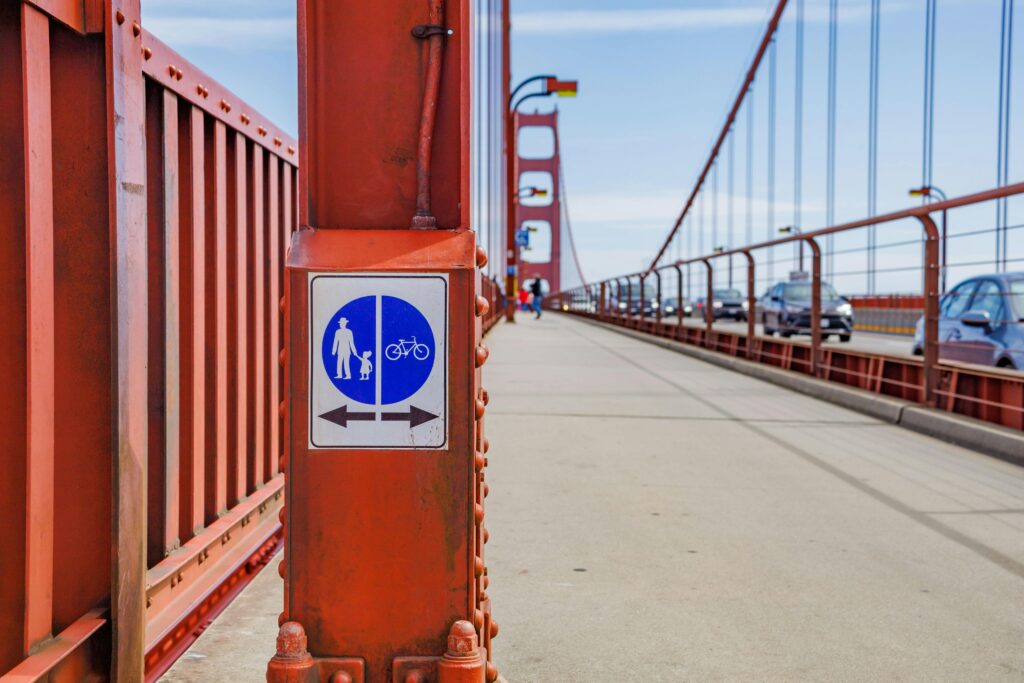Cycling in California offers countless benefits—it’s good for your health, the environment, and your wallet. But when it comes to sharing the road safely and legally, cyclists must understand their rights and responsibilities. Whether you’re commuting, exercising, or just out for a weekend ride, knowing the key bicycle laws in California can help you avoid fines, accidents, and liability issues.
Here’s what every cyclist in California should know.
1. Bicycle Helmets Law in California
One of the most common questions we get is about helmets. California law is clear on this:
- Riders under 18 must wear a properly fitted and fastened helmet while riding a bicycle, whether on the street, sidewalk, or trail (California Vehicle Code §4006).
- For adults, helmets are not mandatory, but highly recommended. While the law gives adults the option, the reality is that helmets significantly reduce the risk of head injuries.
In injury cases, whether or not a rider was wearing a helmet can sometimes affect how fault and damages are viewed—especially when the rider is under 18.
2. Can You Ride a Bicycle on the Sidewalk?
The short answer: it depends on your city.
California law doesn’t ban or allow sidewalk cycling statewide. Instead, local governments set their own rules about whether you can ride a bicycle on the sidewalk. For example:
- In Los Angeles, riding on the sidewalk is allowed unless it’s done in a way that endangers pedestrians.
- In San Francisco, sidewalk cycling is mostly prohibited for riders over 13.
- In San Diego, sidewalk riding is generally permitted unless signs say otherwise.
Bottom line: check your local ordinance before hopping onto the sidewalk. Even if legal, always yield to pedestrians and ride at a safe speed.
3. Bicycle Rules of the Road
In California, bicycles are legally considered vehicles. That means cyclists must follow many of the same rules drivers do:
- Ride in the same direction as traffic
- Obey all traffic signs and signals
- Yield to pedestrians in crosswalks
- Use lights and reflectors at night (white front light, red rear reflector or light, pedal and wheel reflectors)
- Use bike lanes where available, unless turning left or avoiding hazards
- Signal when turning or stopping
You can take the full lane when it’s unsafe to ride on the right side, but it’s important to do so responsibly. Riding predictably and visibly is key to safety.
4. Liability and the Law: What Spriesterbach v. Holland Teaches Us
A 2013 case, Spriesterbach v. Holland (215 Cal.App.4th 255), gives valuable insight into liability in bicycle accidents.
In this case, a cyclist was injured when a motorist made a left turn across his path. The driver argued that the cyclist was partially at fault for speeding and not riding far enough to the right. The court ultimately found both parties shared some blame, but the driver was still found liable for not yielding to oncoming traffic.
Why does this matter? Because it highlights California’s comparative negligence rules. Even if you’re partly at fault in a crash, you may still recover damages—they’ll just be reduced by your percentage of fault.
If you’re injured in a bicycle accident, expect insurers to comb through every detail. Having an attorney who understands how to apply case law like Spriesterbach is crucial.
5. Know Your Rights if You’re in an Accident
If you’re involved in a crash, whether with a car, pedestrian, or another cyclist, protect yourself by:
- Getting medical attention immediately
- Documenting the scene with photos and notes
- Getting witness contact info
- Filing a police report if there’s injury or significant damage
- Avoiding any admission of fault
After that, it’s wise to consult with a personal injury attorney. Bicycle accidents often involve complex liability issues, especially when local laws and specific court decisions come into play.
Conclusion: Stay Safe, Stay Informed
Cycling is one of the most rewarding ways to get around in California, but it comes with legal responsibilities. Understanding bicycle helmet laws, sidewalk riding regulations, and bicycle rules of the road can help keep you safe and protect your rights if you’re ever in an accident. And cases like Spriesterbach v. Holland show how the courts weigh fault when things go wrong.
If you’ve been involved in a bicycle accident and aren’t sure what your rights are, contact B&D Injury Law Firm for a free case review. We’ll walk you through your legal options and help you pursue the compensation you deserve.
Call us today to schedule your free consultation.
